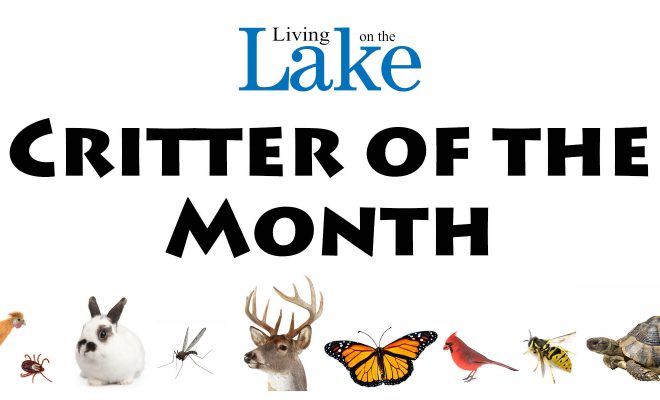Critter of the Month: northern river otter

The northern river otter, also known as the North American river otter or the common otter, is a mammal which inhabits much of the United States and Canada, but in Wisconsin, they are most prevalent in the northern half of the state.

River Otters are 3 to 4 feet long with tails that are 12-18 inches long at least one-third of their total body length. They are shades of brown to light tan with very dense waterproof fur.
What do they look like?
The river otter is the largest member of the weasel family. They are about 3 to 4 feet long with a tail that is at least one-third of its total length (about 12-18 inches long). They are covered in dense, waterproof fur that varies from shades of brown to light tan. They have webbed toes, small triangle-shaped noses, and stiff whiskers. Adult river otters will weigh anywhere from 15-30 pounds, with males being larger than females.

River Otters have webbed toes for efficient swimming and long stiff whiskers to help locate food in murky water.
Where do they live?
Being a semi-aquatic animal, river otters will live anywhere near water. They live in abandoned beaver lodges, muskrat dens, under roots of upturned trees or even in holes on the river bank. River otters shy away from humans so they aren’t easily spotted. In addition, they are primary nocturnal, though they are sometimes active at dawn or dusk. In the winter, however, they like to lie on top of the ice and bask in the sun, and this is most often when they are seen.
What do they eat?
River otters are omnivores which will eat animals and occasionally plants. Small fish and frogs are their first choice, but they will also eat birds. They have a high metabolism so they eat frequently. River otters will generally establish a territory of about three square miles to ensure enough of a food supply. In order to reduce competition for food, a river otters will mark its territory with its own feces, urine or musk.

River Otters primary feed on small fish and frogs. The fact that they can swim 7 mph makes them effective hunters.
River otters have a keen sense of smell, and their stiff whiskers help them locate food in murky water. Their ears and noses have a valve-like skin covering that closes underwater making them water-tight. The eyes of a river otter are adapted to seeing underwater, so much so that they are slightly near-sighted above water.
River otters can swim 7 mph and can stay underwater for four minutes at a time. They can dive to depths of over 40 feet, all which makes them excellent hunters. On land, they can run up to 15 mph.
In the winter, they travel across the snow by sliding. In an area with river otters, it is common to see a pattern in the snow left by the otters. They often take two bounding jumps followed by a slide. The resulting track looks a bit like giant Morse code in the snow of dot, dot, dash.
What is their life cycle?
Babies, called pups or kits, are born in April or May after a year-long gestation. A mother river otter will have between 2 and 4 pups each year. At birth, they are about 4 ½ inches long and fully furred. Their eyes remain closed for about a month. Between 8 and 12 weeks, the pups are weaned and taught to swim. River otters, especially the young ones, often appear to be playing with their food as they catch, release, and re-catch prey, but this is how they learn and develop coordination. They also wrestle and chase each other, increasing their hunting, running and swimming skills. They will remain with their mothers for one year, after which they will move on to establish their own territory. Most river otters will live 10-15 years.
What are their threats?
At the end of the 19th century and the beginning of the 20th century, river otters in the northern part of the United States were hunted extensively for the thick durable fur, causing their numbers to dwindle. Since they weren’t hunted as much in the south, otters were trapped in southern states and released in northern areas in recent years to rebuild the population.
River otters are not considered threatened or even at risk currently. In many areas, including Wisconsin, otters are still hunted, but it is regulated so as to keep the population numbers at healthy levels.
The main threat faced by river otters, like many other species, is loss of habitat. Keeping wetlands intact and allowing for natural and wild areas along rivers and streams will help ensure the river otter remains in the Northwoods far into the future.
Leave a reply
You must be logged in to post a comment.

